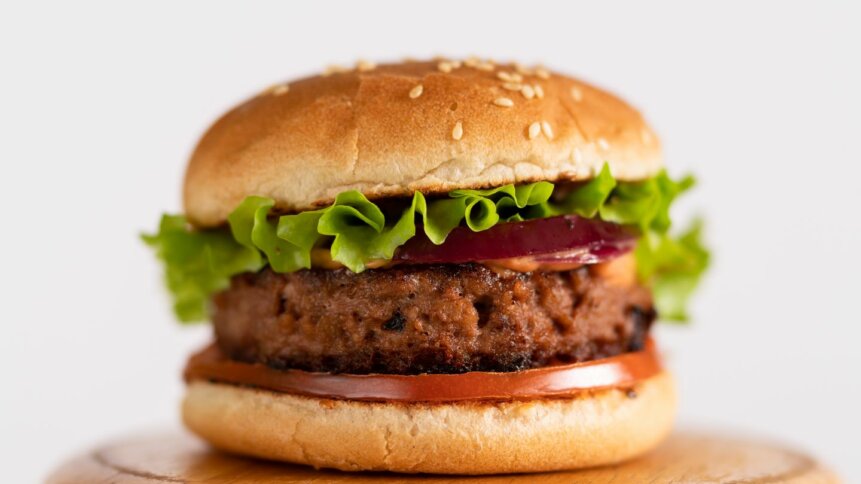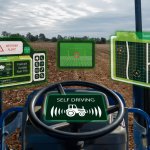From Field to Plate – How the Tech Industry Enables The Food Supply Chain, Part 2

In Part 1 of our look at how the tech industry enables and improves the food supply chain, we examined some of the strides being made in the world of agriculture – bringing fruits, vegetables, herbs and grains to market faster, more precisely, and with greater efficiency through the application of technology.
In Part 2, we’ll look at how high tech is being used to improve the world of meat processing, fishing, and the production of vegan proteins with more omnivorously palatable flavor.
Trigger warning – vegans, or those of a nervous disposition, may wish to skip the section on meat processing and simply take our word for it that technology is making the process a lot more efficient.
Meat
Meat processing is a very different thing to butchery. Butchery tends to be a highly skilled profession, undertaken by relatively small teams of people at a time, and it tends not to have strict, factory-style targets and deadlines imposed upon it – allowing the butcher to take their time, be precise, and exercise skills and arts that turn a carcass into various easy-to prepare cuts and products for the consumer to prepare at home.
Meat processing is precisely what it sounds like – a previously industrialized process, working on a colossal scale (over $274 bn in 2022 in the US alone), to tight deadlines. Meat processors use some of the same tools as butchers, but they use them at a far earlier stage in the food supply chain, often starting with live animals and ending with carcasses or cuts stacked in pallets ready for transport.
The deadlines and the volume of meat that has to be processed entail rush, and rush in meat processing can entail injury.
Technology is helping to maintain the speed of processing the market demands, but reduce the risk to human health, improve the end product, and maintain the freshness of these necessarily perishable products for their journey between field or stall and plate.
Animal Welfare
We know there has been significant mechanical involvement in animal welfare for some time – auto-feeders, the technology behind vast dairy farms and the auto-milking operations, etc. But increasingly, the Internet of Things allows for closer remote monitoring and alarms to ensure no viable creature is lost – around the birthing process, in particular, but also to ensure reasonable precautions to prevent the spread of disease, etc. A simple sensor and camera set-up can alert farmers to difficulties without having to spend their lives among their animals, so remedies are quick and effective, potentially reducing the veterinarian bills to which meat farmers are subject.
Deboning
That skill the butcher brings to every cut is not just a matter of making the final stage product look appealing to consumers. Any cooking show will tell you that if you make the right cuts, you will not only end up with a more aesthetically pleasing product, you’ll also end up with less wastage, and therefore more product to sell per carcass.
While the skills of the butcher are still greatly appreciated in the final stage, during meat processing, there are now technology-rich precision-guided deboning machines that are at least technically robots, which can handle vast amounts of meat with the same precision as a butcher can use on one carcass at a time. That helps minimize food wastage, and increase the amount of product-per-carcass going into the market. While it sounds potentially gruesome to have robo-guided deboning machines, it’s actually no different to many digital transformation projects across the business world – the application of technology to maximize effectiveness and minimize both time, potential human injury, and environmental impact through wastage.
High-Pressure Processing
High-pressure processing (HPP) is an emerging technology, and is used with both raw product and ready-to-eat meat and seafood products. It helps retard bacterial growth and maintain the viability of meat and seafood in packaged products during the sometimes-long transit and shelf-life sections of the food supply chain. That means it requires less chemical treatment to maintain the meat’s freshness all the way to your plate, but on a more industrial scale, using high-pressure processing also means a reduction in the high-cost and wasteful energy used to achieve the same results where HPP is not currently in use.
By using high pressure, rather than heat, to kill potential pathogens and make meat safer to transport, store, cook, and eat, meat processors can maintain more of the textural integrity of the meat and lower their energy bills. Future developments of HPP are expected to achieve the same or better results while lowering the energy consumption, to allow for further economic and ecological progress through advanced technology.
There’s also a process called Shockwave, or Dynamic High-Pressure Processing, which has the same effect of pressure-pasteurizing the meat, while also acting as a meat tenderizer and lowering the energy requirements of the process still further. At the moment, though, this is much more suitable for small-batch application, rather than widescale meat processing.
Ohmic Heating
Another emerging technology, Ohmic heating uses not traditional heating elements, but electrical resistance heating to pasteurize and sterilize either single units or mass batches of meat before it begins its journey to your plate. Again, this is not yet being as widely used as it could be, but it’s a high-tech method of reducing chemical antibacterials in your meat, maintaining the quality and texture of the product, and reducing the likelihood of spoilage during the final stages of the food supply chain – the ones that get it to your home.
Robot Palletizers
The business of a meat processing operation isn’t just about handling the individual products, though. The scale of meat processing operations in the Western world are phenomenal, so that when meat products are being prepared for either shipping or road haulage, they are palletized in bulk. These days, the human being is being increasingly – though as yet by no means completely – replaced in this often dangerous, heavy, labor by robots, who never break a sweat, a bone, or their composure when palletizing and depalletizing huge amounts of meat and meat products.
On-site Temperature Control
Everyone knows that you can’t store meat or fish at anything like room temperature and expect it to stay viable for long. As an outgrowth of – and now a key market for – asset tracking and temperature control technologies, both cold and chilled storage units at meat processing plants are increasingly fitted with high tech sensors and activity loggers, so that processors can be certain there has been no health-compromising dip in temperature in their storage facilities, meaning meat leaves their premises in as pristine and food-safe a manner as possible.
Obviously, as with farming, the business end of meat processing has particular needs that have to be met, and software developers have been quick to modify existing business management tools, or create them as new, to help meat processors streamline their businesses.
Fish
The ways in which high technology is helping the fishing industry include a story of overachievement. When the first fishfinding technology was developed, it led to a widescale adoption, and resultant overfishing that threatened the marine ecosystems of the world, leading to tough international laws on what can and can’t be caught.
These days, technology to help the fishing trade is as much about monitoring and tracing the catches of fishing fleets as it is about preparing the fish for market. The addition of both sophisticated, low-power cameras on fishing boats, to record the size, type, and (with help from a GPS antenna) geostamp of catches allows fishing operators to remain within the law while still making a living and ensuring plenty of product to drive overall consumer products down. Connecting the cameras to pressure sensors, so they only activate when a catch is recorded means using less energy to achieve compliance.
In the fish and seafood processing business, there is as yet less reliance on technology. HPP though is becoming popular, particularly in seafood processing, as not only does it pasteurize the seafood for safety (a growing concern in oceans increasingly full of both pollutants and microplastics), in the case of shellfish, it can also detach the flesh from the shell without impacting on the sought-after tenderness of the meat – something which any great amount of heat treatment would compromise.
Vegan Protein
It’s arguable that some of the more sophisticated and palatable vegan proteins available today are an aria to high technology in and of themselves – and a useful one, creating a whole market while gradually reducing the ecological absurdity of the amount of land given over to, for instance, raising cattle to feed the traditional meat market.
There’s a line here where skeptics would claim that it’s science, not technology, that transforms, for instance, pea protein into the likes of Beyond Meat – the new generation of vegan proteins without the hair shirt factor of poor taste and texture that were integral to early ‘meat alternatives.’
The point is moot though, because science and technology are partners in these endeavors, not rivals. Science can’t work without technology, and vice versa. So yes, we’re claiming the whole evolution of vegan protein into something with taste and texture as a technological development.
Backing up that claim is the work of tech companies that are actively working to solve the well-known problems of vegan protein, and particularly vegan meat substitutes. They have a tendency to be dry, and to lack some flavor because of an absence of animal fat (to which as mostly omnivorous children, we have become accustomed, associating it with pleasurable flavors). But work is actively ongoing to improve even on the current generation of evolved vegan proteins, so that, for instance, techniques like “extrudable fat technology” becomes a mainstay of the next generation of vegan proteins, delivering a more appetizing mouthfeel and taste.
Perhaps ironically, vegan protein – which is beyond any shadow of doubt a more ecological alternative for the planet than continued mass meat farming – has proved to be a special boom area for technology companies, precisely because it’s process-intensive, so there are lots of levels at which tech companies are not only helpful, but vital to the end result of the product.
In Part 3 of this article, we’ll take a look at how technology is impacting the transport and storage of our food, from field to plate.










